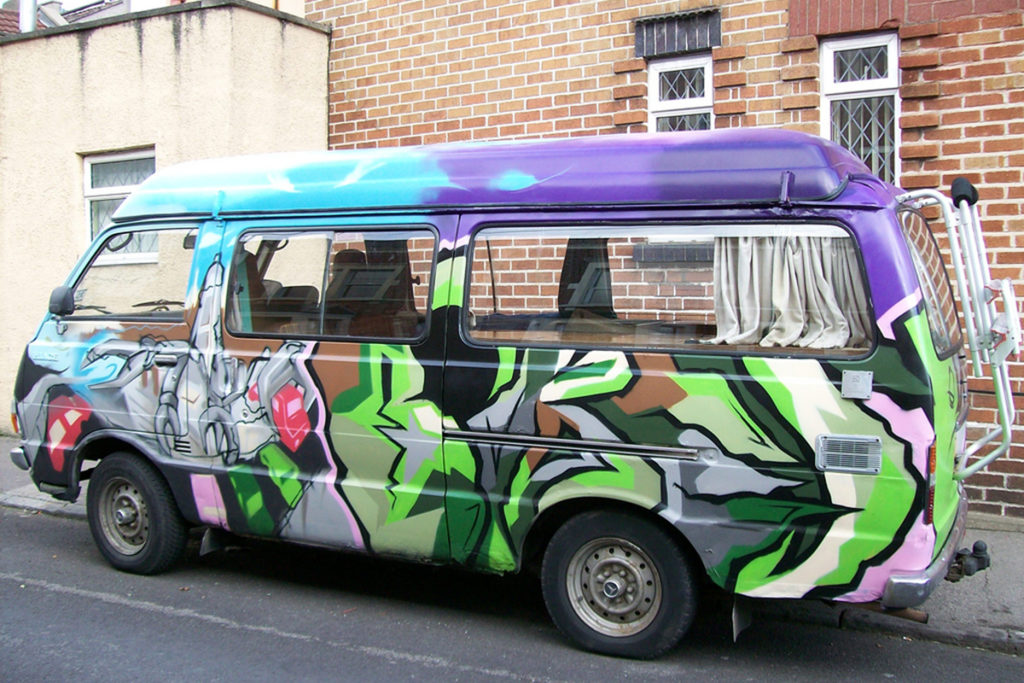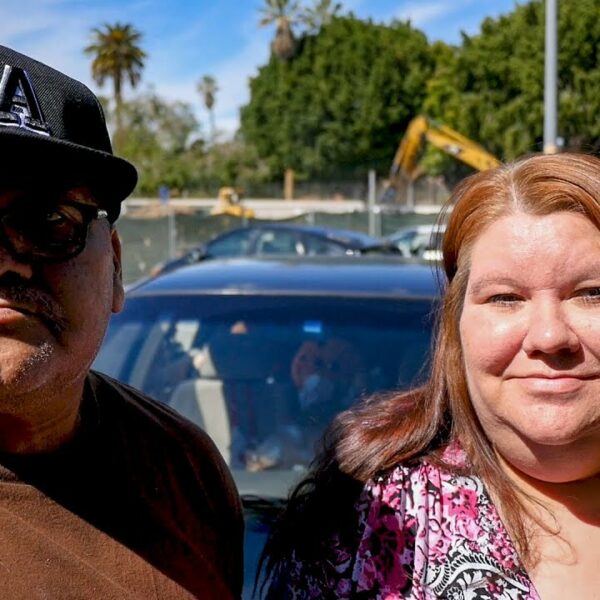There are two halves of Bristol separated by income. Sadly the rich half is killing off the poor.
Bristol City Council in the West of England has instituted a go-easy policy towards lived-in vehicle encampments in the city. Some 200 vehicles are ‘lived-in’ thanks to exploding property prices that many low paid workers just can’t afford. ‘Lived in vehicles’ is a bureaucratic name for a camper van, a mobile home, car or even a horse box in which people dwell as they can afford nowhere else.
Boho Bristol
I generally hate cities but I love Bristol for its vibe. The main city has around 600,000 residents and a certain rebellious attitude that is famous the world over. Why? Banksy’s murals. The world famous graffiti artist pretty much sums up the working class scene in Bristol with its fuck-you attitude to the Establishment and proud working class roots.
Want the best Caribbean food east of the West Indies? You won’t go wrong popping up to St. Paul’s Settlement for a reasonably priced, belly-filling dose of curried goat and rice & peas. Aside from the West Indian community, that area used to have some of the best nightclubs in the Second Summer of Love era.
Before the “super fence” priced the soul out of it, ahead of the world famous Glastonbury music festival, you would see and smell people from the hippy and traveller community as they arrived in droves to prepare for their latest celebrations. Despite the UK’s tough drugs laws, many people soon realise you can smoke weed openly on the streets and the police won’t bust you. There’s even a pub where you can buy the best stuff as if you were in a CA dispensary.
In 2011, this attitude towards the Establishment exploded when the national grocery chain Tesco tried to open a mini-market in Stokes Croft, the epicentre of the Boho community. How did the locals respond? They rioted. You may read sniffy, right-wing analyses of the riots. But honestly, this wasn’t the case.
The locals are fighting gentrification. Rich folk from London come for the vibe. Yet they are destroying it by forcing property prices out of reach of the very people who make Bristol what it is.
Rich Bristol
The city became wealthy thanks to the slave trade. Walking up into wealthy Clifton, at the south western end of the city, you will walk up Whiteladies Road and Blackboy Hill, living memories of the money that enriched Bristol for centuries. As a seaport, it was one corner of the slave triangle between the UK, Africa and the Caribbean.
The buildings in the Clifton area are beautiful Georgian and Regency architecture. They are very attractive to those who today are wealthy. In the years since I arrived there homeless and unhappy, property prices have got seriously out of control.
Victorian civil engineer Isambard Kingdom Brunel died while building the Clifton Suspension Bridge. He also built the railway line that is partly responsible for the city’s gentrification today. It’s the Great Western Railway line that takes express trains from Swansea to London. You can be at work in London in just two hours from Clifton. If four hours of daily commuting sounds difficult, then observe the ridiculous cost of living in London and you will soon see why its influence reaches so far west.
Gentrification Leads to Ever Smaller Accommodations
Along with those for whom a million-dollar apartment is financially acceptable, you have those for whom there hasn’t been wage inflation and are squeezed into ever smaller properties.
After obtaining my Master’s Degree in Cornwall in 2005, I came back to find a one-bed apartment in Redland, just outside Clifton but still wealthy. It had an 8-foot-by-8-foot living room, a smaller bedroom and a shower/toilet space that may once have been a built-in wardrobe. The cost: $700 a month. Having a car, I moved to St. George where less rent got me a much larger apartment. I even had a large window overlooking a World War I cemetery.
By 2016, average rents in the city hit $1,200 a month. In London, it was close to $2,100 a month. Even with the horrendous train prices, it was still more sensible to live in Bristol than London for some!
Squeezed Out of the Bottom
Many of the most intelligent, driven people I know live in the less wealthy areas of Bristol. Organisations like the squatting and land rights organisation, This Land is Ours, and international drug policy reform group, Transform, have their bases there. You don’t have to be intellectually challenged or a drug abuser to end up homeless in a city that is just too expensive to live in.
From those property prices, you have working people who can’t afford somewhere to live. Their response has been to form lived-in vehicle settlements in different areas of Bristol including St. Werberghs and Easton.
The Guardian interviewed Nigel, who said, “The noise and pollution are horrible. I’d like to be in a flat, but I’m only earning £600 a month.”
Across the UK, right wing councils may have just given eviction notices to those living there and forced communities to move on. Thanks to reports of antisocial behaviour and public defecation, as well as a fire that broke out in one Bristol community, eviction was moved on by city officials in May 2018.
At the same time, however, Bristol City Council took a radical stance: it allows those communities to remain as long as they do not misbehave. In July 2018, the council released a statement that included the following:
“The impact of the encampment will determine the action taken. Welfare assessments will take place to ensure that support can be offered where it is needed.”
Essentially, the council is protecting Bristol’s “upper underclass” because it recognises it lacks the ability to provide adequate housing. To do so, the city would have to accommodate an extra 200 households. This isn’t possible in its already overstretched social housing estate. In finding solutions, Bristol’s upper underclass are now protected so they have somewhere to stay.
Not a Bed of Roses
The hippy and traveller community I referred to above do not live in these settlements. Instead, they are largely countryside dwellers, fighting their own battles with gentrified councils just to live how they choose. The lived-in vehicle communities in Bristol are effectively the “barrios” you see in Latin America. They are unplanned, unsanitary settlements where people cling to the very fringe of society.
Bristol has been a victim of its own success. It is such a nice place to live that you have to be comfortably off to live there. Or you had to arrive when there were sane property prices. It is now a place where Capitalism is eating itself. Thankfully, it’s also where those who run the city accept those who have no choice but to live like this.













